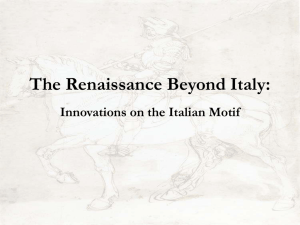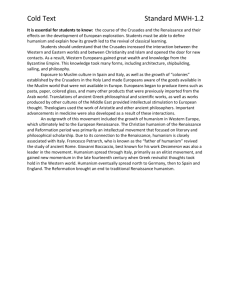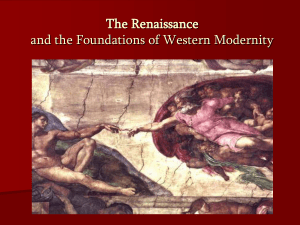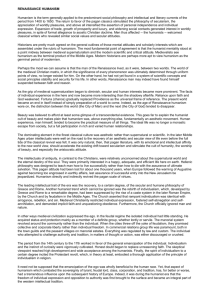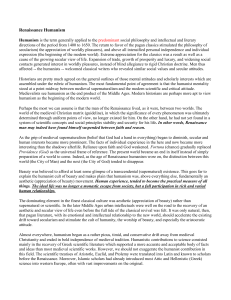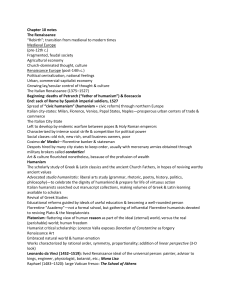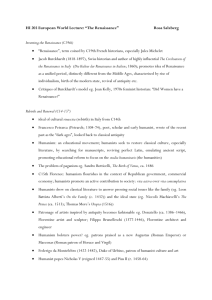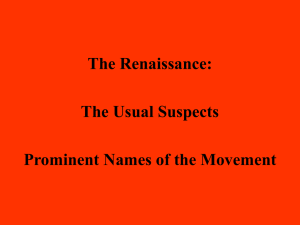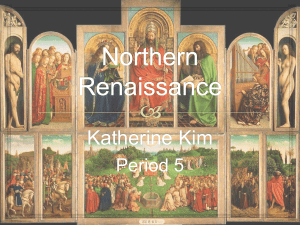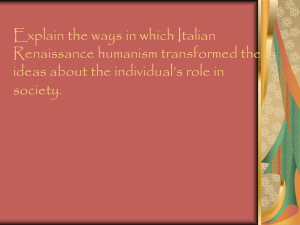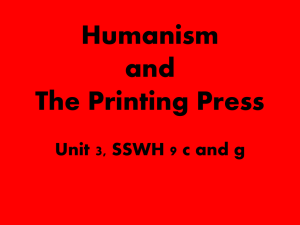Humanism - sbroome
advertisement
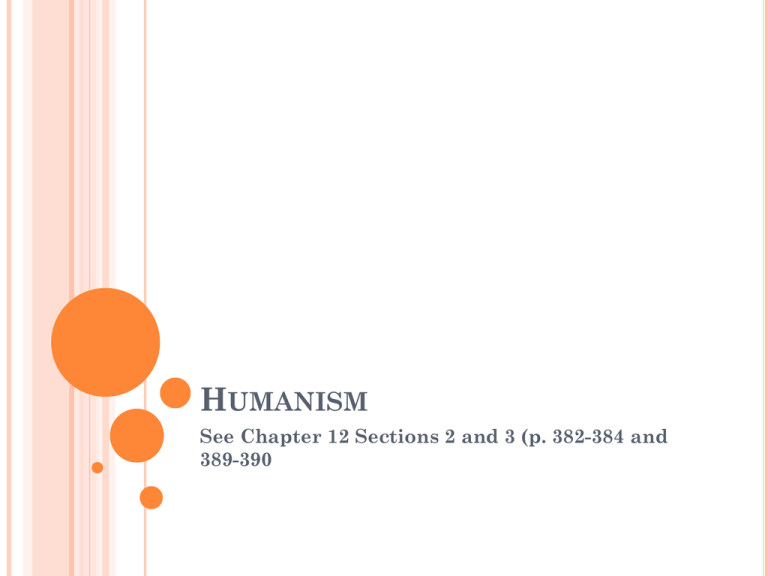
HUMANISM See Chapter 12 Sections 2 and 3 (p. 382-384 and 389-390 ITALIAN RENAISSANCE HUMANISM A key intellectual movement of the Renaissance was humanism. Humanism was based on the study of the classics, the literary works of ancient Greece & Rome such as grammar, rhetoric, poetry, moral philosophy, and history. Petrarch has been called the father of Italian Renaissance humanism. Petrarch did more than any other individual to foster the development of humanism. Began the humanist emphasis on pure classical Latin (Latin as used by the ancient Romans) ITALIAN RENAISSANCE HUMANISM CONTINUED… Humanists used the works of Cicero as a model for prose & those of Virgil for poetry. In Florence, the humanist movement took a new direction at the beginning of the 15th century. New interest in civic life. Believed that it was the duty of an intellectual to live an active life for one’s state. The study of humanities should be put to the service of the state. VERNACULAR LITERATURE & EDUCATION IN THE RENAISSANCE The humanist emphasis on classical Latin led to its widespread use in the writings of scholars, lawyers, & theologians. Some writers wrote in the vernacular- the languages spoken in their own region- such as Italian, French, or German. In the 14th century, the works of Italian author Dante and the English author Geoffrey Chaucer helped make vernacular literature more popular. Dante’s masterpiece is the Divine Comedy and Chaucer’s most famous work is The Canterbury Tales. VERNACULAR LITERATURE & EDUCATION IN THE RENAISSANCE Humanist movement had a profound effect on education, believing that education could dramatically change human beings. At the core of humanist schools were the liberal studies. (Today we call these liberal arts) History Moral Philosophy Eloquence or rhetoric Letters (Grammar & Logic) Poetry Mathematics Astronomy Music Following the Greek ideal of a sound mind in a sound body, humanist educators stressed physical education, such as javelin throwing, archery, swimming, dancing, running, and hunting. Its aim was to create complete citizens. Model for the basic education of the European ruling classes until the 20th century. Few females attended; Religion & morals should be foremost so they could become good wives & mothers. ERASMUS & CHRISTIAN HUMANISM During the second half of the 15th century, the new classical learning that was part of the Italian Renaissance humanism spread to Northern Europe. From that came a movement called Christian Humanism, or Northern Renaissance humanism. The major goal of this movement was the reform of the Catholic Church. Christian humanists believed that in order to change society , they must first change the human beings who make it up. The best known of all Christian humanists was Desiderius Erasmus. CHRISTIAN HUMANISM & ERASMUS Erasmus stressed the inwardness of religious feeling. To reform the church, Erasmus wanted to spread the philosophy of Christ, provide education in the works of Christianity, and criticize the abuses in the Church. Humorously criticized aspects that he believed were in most need of reform. Sought reform within the Catholic Church. His ideas prepared the way for the Reformation.
